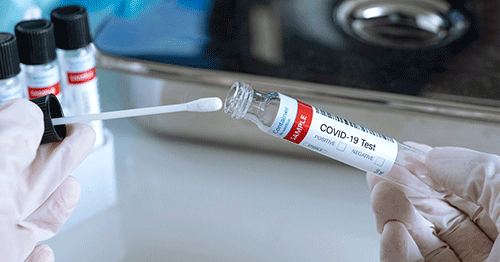The medical aid fund industry was financially sound and well capitalised as of 30 September 2021 despite the challenging macroeconomic climate coupled with the impact of Covid-19.
This was evidenced by the average industry reserve level of 36.77%, which exceeded the 25% recommended minimum prudential benchmark set for the medical aid fund industry.
This is according to the Namibia Financial Institutions Supervisory Authority (Namfisa) in its third quarter report released last week.
In illustrating costs incurred by the industry due to Covid-19 diagnostic tests and other related costs for the third quarter, medical aid funds split Covid-19 expenses incurred between costs related to testing and those related to hospitalisation.
“These costs amounted to N$18 089 875.37 and N$177 723 317.76, respectively, from 1 July to September 2021. The total cost recorded was N$195 813 193.13,” reads the report.
The industry’s claims ratio decreased by 5.74 % to 98.9% during the quarter ended 30 September 2021 (104.63%: 30 June 2021), which consequently exceeded the maximum prudential benchmark of 87%.
Namfisa said the claims ratio is expected to reduce further during Q4 of 2021, owing to the depletion of benefits and the deferment of non-emergency procedures to the first quarter of the 2022 financial year.
Furthermore, the industry reported an 8.28% increase to N$34.92 million in investment returns during the quarter ended 30 September 2021:
“The increase was predominantly attributable to higher fair value gains reported and due to a general increase in investor confidence following the declining Covid-19 infections, during the quarter under review”.
It added the industry’s total assets decreased from N$2.26 billion to N$2.14 billion mainly attributable to the decrease in cash and cash equivalents and money market instruments used to fund working capital requirements during the period under review.
Namfisa assured that despite the reduction in the total assets, the industry remained well capitalised with sufficient assets to fund unexpected expenditure for the remainder of the 2021 financial year.
Total investment assets reduced from N$2.07 billion as of 30 June 2021 to N$2.05 billion as of 30 September 2021 due to redemptions. The law requires medical aid funds to invest at least 45% of their assets in Namibia, the medical aid funds industry held 52.1% of their total asset in Namibia as of 30 September 2021 (50.17%: 30 June 2021) in compliance.
According to Namfisa, the industry generally requires a high degree of liquid assets to meet its short-term obligations. Accordingly, most of the industry’s investment assets are invested in money market instruments (which includes unit trusts) given the flexibility of disinvesting at short notice.
“This is essential for the operation of medical aid funds due to the variation in claims and the short-term nature of the industry’s liabilities. Moreover, money market instruments generally offer an element of diversification to the underlying investment assets depending on the portfolio selected, thereby mitigating the risk of over-exposure to one specific investment class,” it explains.


